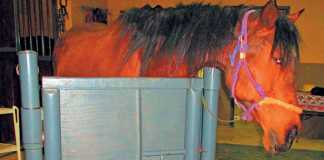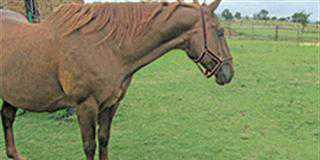You know it’s spring when the flowers start blooming, the trees turn green and all the birds start to sing. However, in most stable yards, the first sign of spring is a single lonely buzzing fly. Often we casually brush it away, forgetting the hordes that pestered the horses last year. Eliminating just one fly can reduce the fly population by up to 900 flies, while more than 10 000 flies can emerge from 1kg of horse manure.
The main culprits
Two species are a pest in stables. The first – and easiest to control – is the common house fly, Musca domestica. Adult females are about 7mm long with four narrow greyish-black stripes on the thorax or chest, while males have two yellow patches on their abdomen. The trumpet-shaped mouthparts are used for sucking up liquid. When they sit on food, they regurgitate their previous meal before sucking up the liquid. It’s this that makes the house fly a dangerous carrier of disease, as the previous food source is usually human or animal faeces. House flies can transmit several horse diseases, including strangles, salmonellosis and eye infections, and they can carry the eggs of intestinal worms.
Each female fly lays between 600 and 900 eggs in manure, or even in rotting vegetable material, over a period of four to 12 days. The eggs hatch into larvae, known as maggots, within one to three days. The maggots can reach maturity within three days under ideal conditions. Once mature, each burrows into the soil to pupate. In summer, the pupae hatch when the temperature rises. Usually this takes between three and 28 days, but they can also survive the winter buried up to 60cm deep in the soil.The second main species is the stable fly, Stomoxys calcitrans. It looks very similar to its cousin the house fly, but the mouth parts are thick, long and pointed, as both the male and female of the species are active blood suckers. They’re the same size and colour as house flies, but if you look carefully, the upper surface of the abdomen has squares, like a tiny chessboard.
These flies drive horses crazy. They’re responsible for the swellings and blood spots seen on the animals’ legs and faces. As they insert their proboscis into the skin of the horse, they inject saliva before lapping up the blood. It’s this saliva that causes severe itching and causes horses to rub their faces raw.
These flies breed in rotting grass-cuttings, hay, straw and bedding both outside or inside stables. The life-cycle is slightly slower than that of the house fly’s, but the whole cycle can take as little as 14 days at an ambient temperature of between 24°C and 30°C. The stable fly pupae can also overwinter in soil and hatch out the following spring. The stable fly is known to transmit several serious horse diseases, including strangles and horse-sickness.
Integrated fly control in stables involves biological control and the simultaneous use of chemical larvicides and adulticides. Biological control includes manure and waste management, fly traps and parasitic wasps.
Older textbooks on horse management describe a manure management system based on high temperatures and composting. Manure is piled in a heap and surrounded by a closely packed single layer of bricks or stones. It’s compacted to eliminate the air spaces fly larvae require and covered with a tarpaulin to increase fermentation and composting. These heaps can become so hot they spontaneously ignite, so they should be placed far away from stables as they are a fire hazard. The Redtop Fly Catcher can be bought at supermarkets and co-ops and parasitic wasps can be ordered over the internet from www.bioinsectsa.com. Larvicides are chemicals that can be sprinkled over manure heaps to prevent larvae from growing and pupating. Fly adulticides include sprays and solutions that can be painted onto stable walls, as well as fly baits.E-mail Dr Mac c/o Chris Nel at [email protected]. |fw













